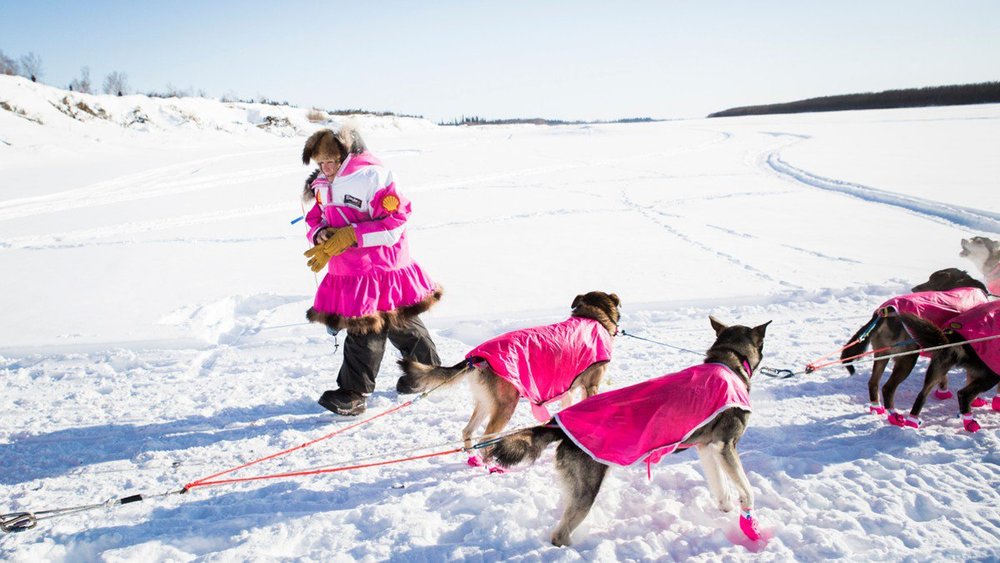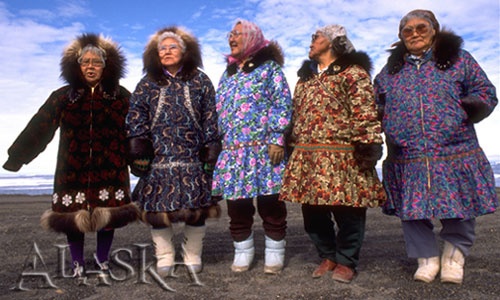the Yup'ik Qaspeq
 DeeDee Jonrowe at the Huslia checkpoint during the 2015 Iditarod. Photo: Katie Orlinsky
DeeDee Jonrowe at the Huslia checkpoint during the 2015 Iditarod. Photo: Katie Orlinsky
DeeDee Jonroe, above, is wearing a kuspuk, a cotton cover that protects a parka. There was an originary cover made of gut or skin, replaced by cotton when trading posts were established: it is generally acknowledged that in the nineteenth and early twentieth centuries the calico came from flour and sugar sacks, some plain unbleached cotton, later prints – trade goods brought up the Alaska coast by whaling ships. Like all traditional dress there are many regional variations, but in general they are loose hooded over-dresses that can be worn on their own in the summer. Some are straight, some have a dropped flounced skirt.
Today, kuspuks have become a garment of Alaskan identity – lots of websites discussing them, selling them – a recovery of peoplehood through clothing. In this case, in the context of the last couple of weeks of posts here, Métis material culture where often the form is European, but the surface is aboriginal (embroidered, beaded, elaborated), with the kuspuk the form is aboriginal and the surface is European.
This seems fundamentally different to how we understand Métis identity as expressed through its material culture where european forms dominate and surfaces are expressive. In the kuspuk, surface expression appears merely expeditious, later decorative, but essentially an easily and cheaply produced utility garment.
With the Métis trappers tents, the form was european, the materials were partially introduced – the canvas, partially native – the poles. The Métis tradition that has survived in everyday life today is the toque. Like the kuspuk which I’ve even seen (rarely it has to be said) on the streets in Calgary, these are contemporary garments. However, I don't think Métis when I see a toque.


